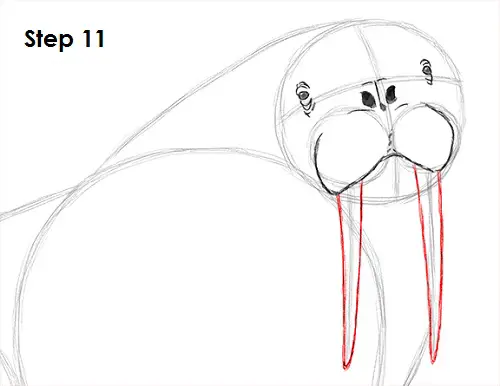
Step 11: Use the initial lines as guides to draw the long tusks. Follow the path of the guide lines but make the tusks thicker at the top and pointy at the bottom. Walruses' tusks vary in length, so you can draw yours as big or as small as you'd like.
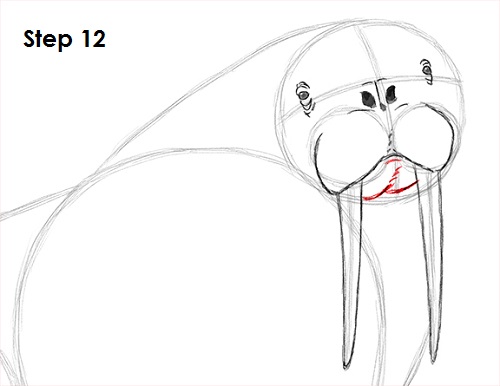
Step 12: Use the bottom part of the main circle as a guide to draw the chin between the tusks.
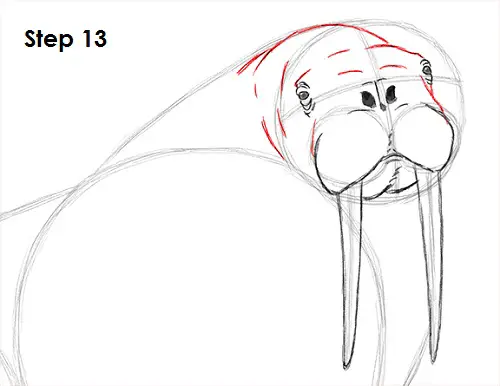
Step 13: Use the original circle as a guide to draw the rest of the head. Draw a few lines in between the eyes for the front part of the walrus's head. The top part of the head is a few curved lines slightly to the left of the main circle. Add a few more lines within the shape of the head for the wrinkly skin.
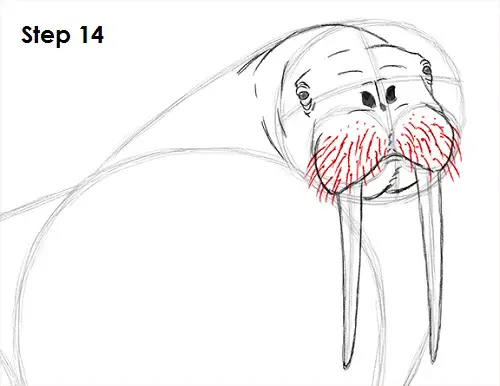
Step 14: Draw the whiskers within the shape of the walrus's muzzle. Use quick, short strokes as you cover the entire muzzle with the stiff bristles. Add a few dots too for the base of the whiskers.
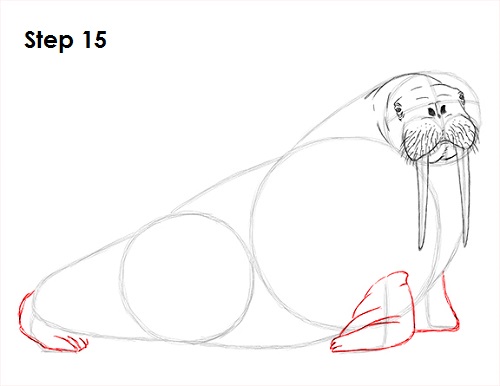
Step 15: Use the angled lines under the body as guides to draw the walrus's flippers. Follow the path of the guide but make the shape of the flipper wider. Add a few curved lines for the overlapping skin. The shape of the front flipper on the other side is a lot simpler because it's facing away. The hind flipper is just a curved line with smaller lines at the tip for the toes. The hind flipper on the other side is hiding behind the body.







